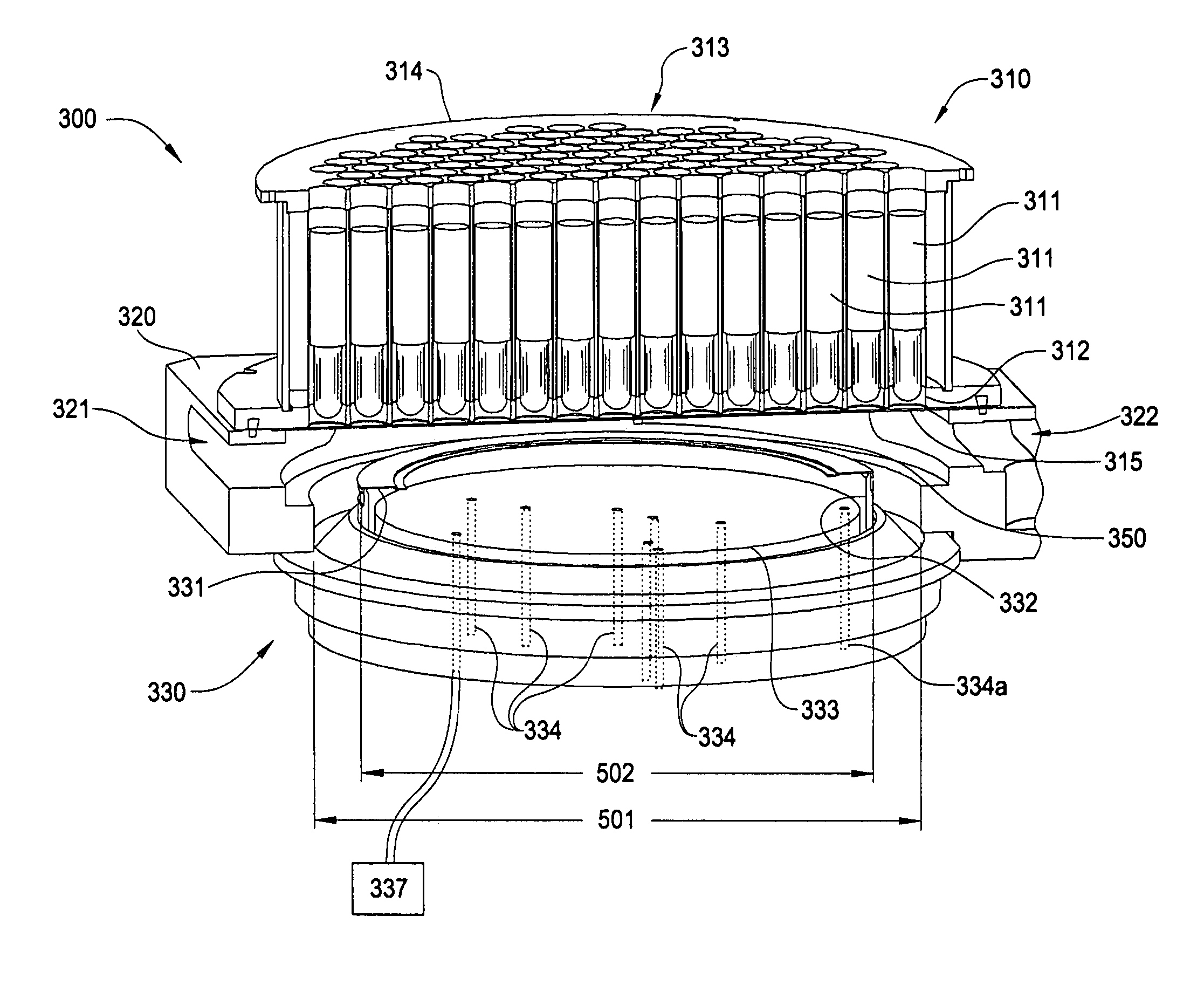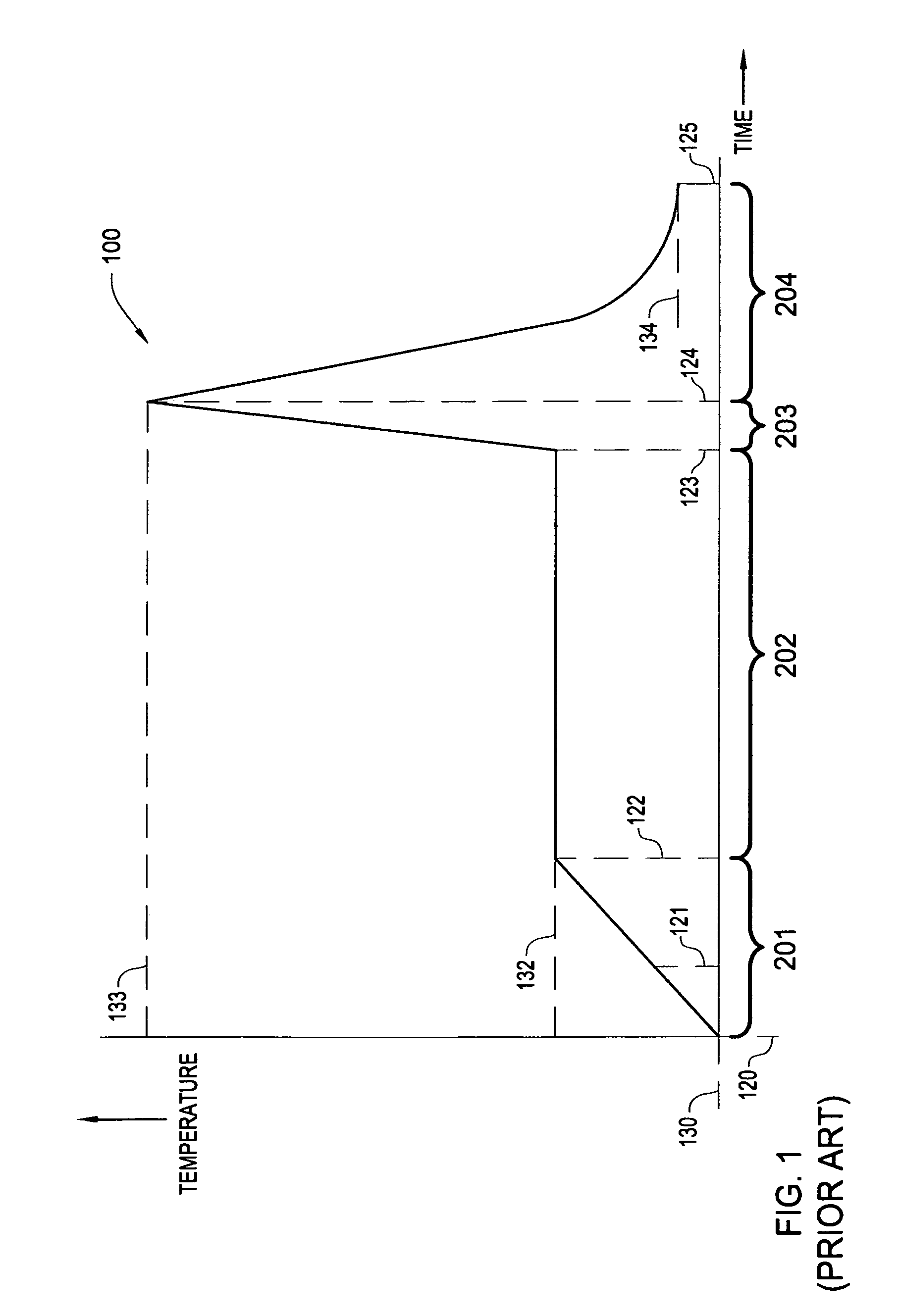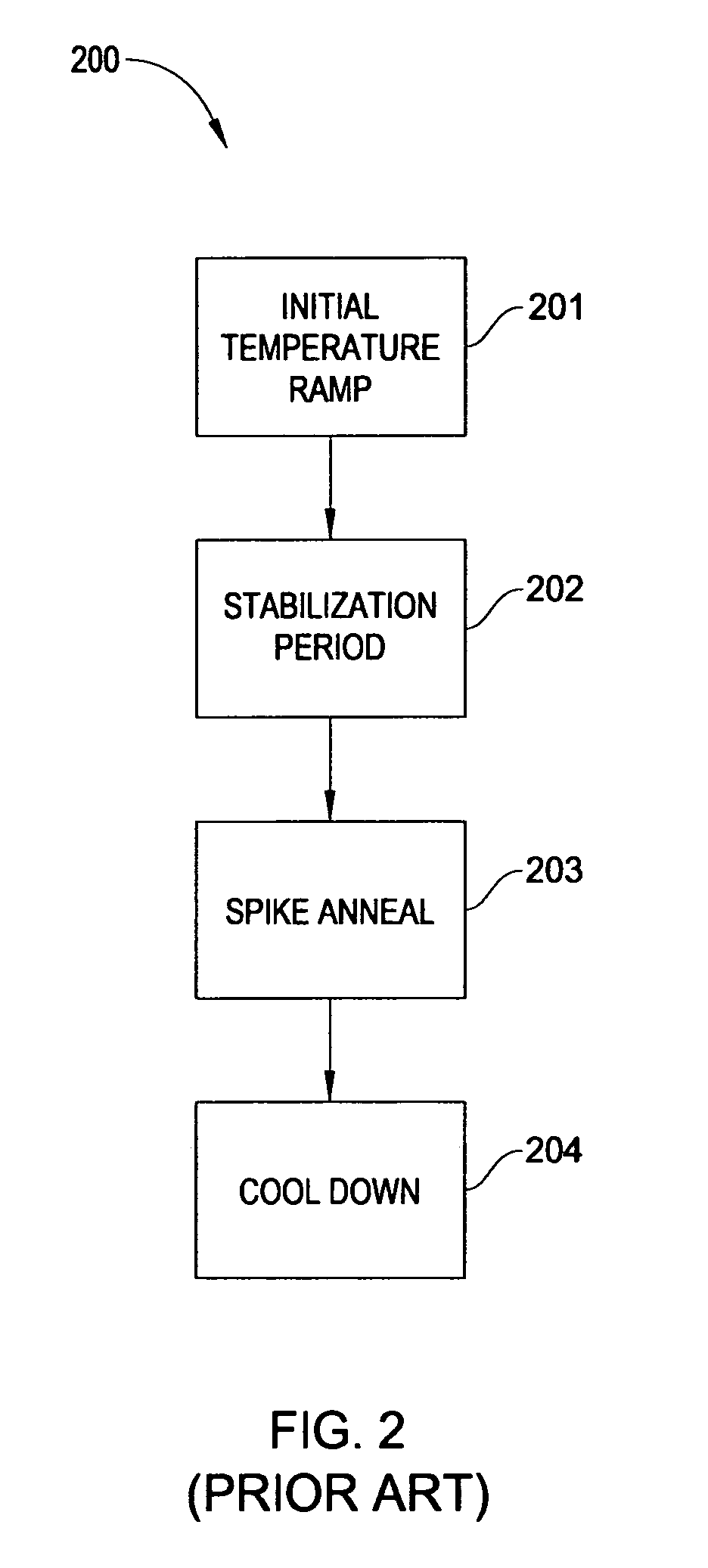Adaptive control method for rapid thermal processing of a substrate
a technology of thermal processing and substrate, applied in the direction of semiconductor/solid-state device testing/measurement, optical radiation measurement, instruments, etc., can solve the problems of substrate temperature gradient, process may be detrimentally affected, non-uniform emissivity of substrate, etc., and achieve the effect of rapid thermal processing (rtp) of substra
- Summary
- Abstract
- Description
- Claims
- Application Information
AI Technical Summary
Benefits of technology
Problems solved by technology
Method used
Image
Examples
Embodiment Construction
[0038]The invention generally relates to methods and apparatus for the rapid thermal processing of a substrate. Embodiments contemplate the use of control algorithms for providing improved peak temperature repeatability, including a real-time adaptive control algorithm, a method for selecting a fixed control algorithm based on substrate properties and a combined method, wherein only a small number of zones utilize the adaptive control algorithm and the remainder are controlled by a computationally less intensive control algorithm.
[0039]FIG. 3 is a partial perspective diagram of an exemplary RTP chamber that may incorporate embodiments of the invention. The exemplary RTP chamber, hereinafter referred to as chamber 300, has been cross-sectioned for clarity. The chamber 300 generally consists of a lamp assembly 310, a chamber body 320 and a substrate support assembly 330. For clarity, only the upper portion of chamber body 320 is illustrated in FIG. 3.
[0040]Lamp assembly 310 includes a...
PUM
| Property | Measurement | Unit |
|---|---|---|
| temperature | aaaaa | aaaaa |
| temperature | aaaaa | aaaaa |
| temperature | aaaaa | aaaaa |
Abstract
Description
Claims
Application Information
 Login to View More
Login to View More - R&D
- Intellectual Property
- Life Sciences
- Materials
- Tech Scout
- Unparalleled Data Quality
- Higher Quality Content
- 60% Fewer Hallucinations
Browse by: Latest US Patents, China's latest patents, Technical Efficacy Thesaurus, Application Domain, Technology Topic, Popular Technical Reports.
© 2025 PatSnap. All rights reserved.Legal|Privacy policy|Modern Slavery Act Transparency Statement|Sitemap|About US| Contact US: help@patsnap.com



